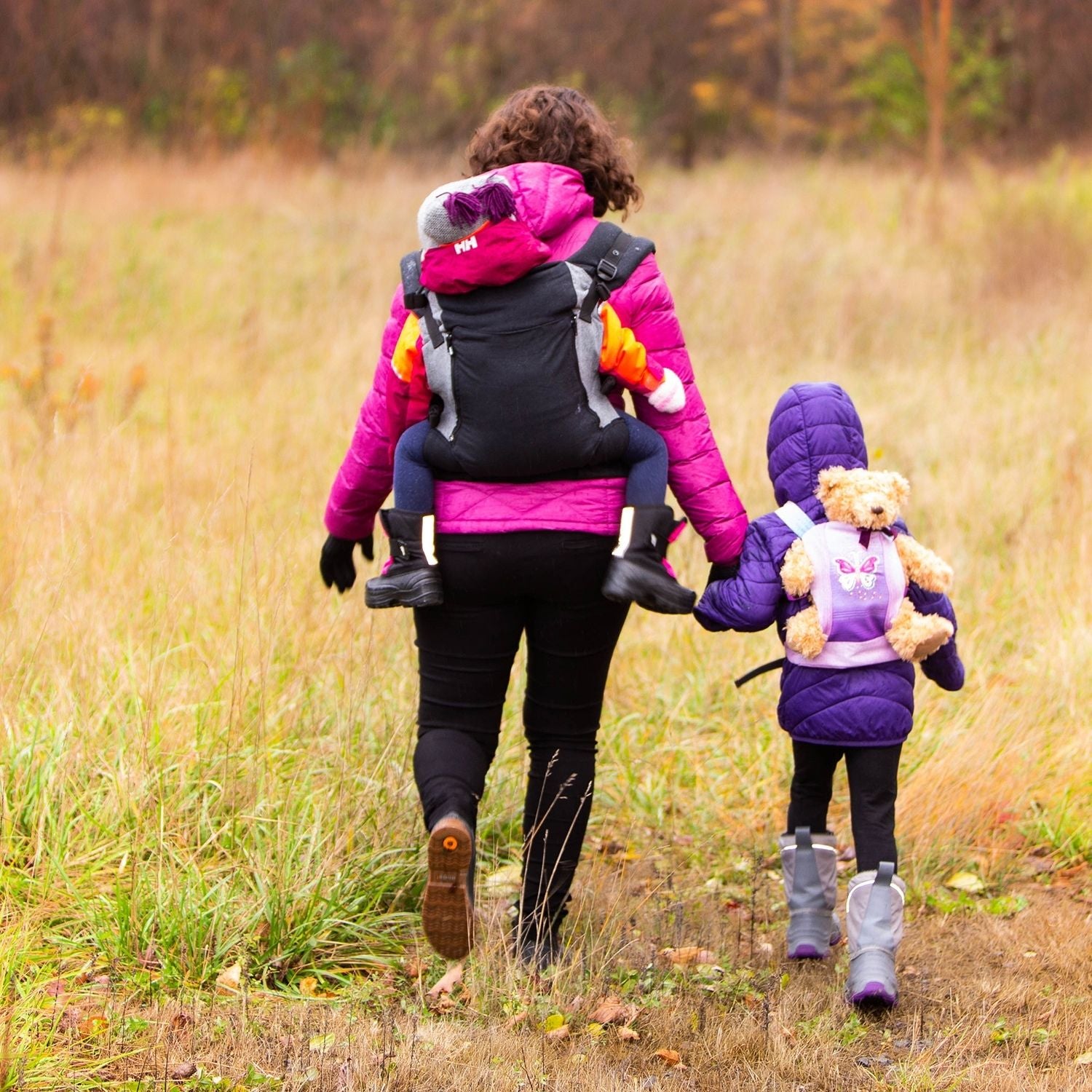Good weather is finally here! It’s the ideal time to enjoy the great outdoors. Chimpäroo is happy to announce to new parents that hiking with their baby is possible from birth (or so). Here are a few tips to go hiking with your baby without worry!
1. Bring the necessary

For a worry-free outing, consider bringing with you:
- Water (a lot).
- A meal and snacks.
- 1 or 2 diapers and something to clean up your baby.
- Depending on the season, protection for your baby against sunlight or cold weather (sunscreen, sunglasses, hat or bonnet, mittens, windbreaker…).
- A favourite teddy bear and a pacifier (tied these down so you won’t have to backtrack looking for them!).
- A blanket or baby wrap to use in multiple ways: as protection for your baby from the sun, as a picnic blanket or as a changing mat.
- A mini first aid kit.
- A small pocket mirror to keep an eye on your baby.
- And very obviously your baby carrier! (more on that later).
Try to travel light. As parents, we tend to overdo things and prepare for the worst, but more often than not, we can get by with what we’ve got on hand. Water from our bottle can clean a stain and a baby wrap will make a proper changing mat in a pinch.
In photo: A mother with the Multi 2.0 baby carrier.
2. Keep an eye on the weather:
A family outing can easily turn into a nightmare! Avoid your bucolic stroll turning into a catastrophe by checking the weather. We’ve all had excursions ruined by Mother Nature’s whims. A great day hiking isn’t the greatest when it ends under pouring rain. Thunderstorms can come and go very quickly and make your hike risky.
3. Choose good footwear for your child:

If your child can walk, he’ll be able to walk part of the trail without being carried and stretch his legs. Much like their parents, toddlers need to wear light weather-proof shoes that will provide them good support. The shoes’ soles should also have good adherence. Babies who don’t walk yet also need footwear as protection from the sun or cold.
In photo: A father walking around with the Chimparöo woven baby wrap.
4. Choose the right trail:
The weight distribution is different with your baby on your back than with a regular backpack.Keep in mind that you’ll be carrying a load that might move. Avoid risky trails and above all else, avoid trails that require the use of your hands. Choose a trail that corresponds to your hiking skill level and experience. Do not throw yourself in a uselessly difficult adventure! In Québec, most mounts and hills have easy trails. Wilderness.org also offers good tips to get you started.
If your baby suffers from anaemia or a cardiac anomaly, you should talk to your doctor to understand the risks brought on by high altitude. Be mindful of asthma and earaches which can be bothersome to your child. Changes in altitude can affect the eardrums. Take breaks regularly to give your child some time to adapt to the changing atmospheric conditions.
5. Get a good baby carrier that’s right for hiking!

You can choose a baby wrap for hiking, but for active parents the Trek Air-O (in photo) really is an ideal carrier. Its seating structure is ideal for hikers. Thanks to its breathable mesh back panel, you’ll be perfectly equipped for hot days in the great outdoors. When the weather cools down, you can use its built-in stretch fabric panel to cover up your baby’s back. Its padded shoulder straps can be worn in parallel or crossed and is put on like a backpack, making babywearing comfortable while enjoying a day of fresh air!
So, is your family ready for adventure?
*******************
On our YouTube page and our Frequently Asked Questions page you’ll find interesting resources to develop your babywearing skills. You can also contact us here.


Share:
5 tips for safe babywearing
New fathers: 5 tips to accompany you along paternity